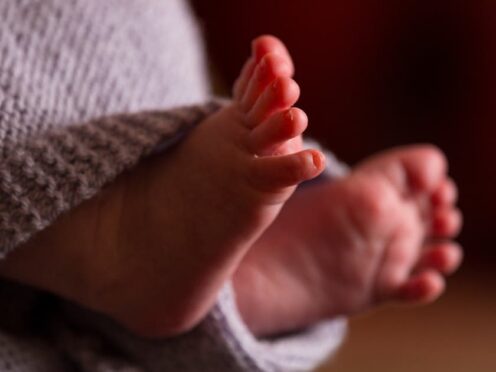
Parents are putting their babies at an increased risk of suffocation or sudden infant death syndrome (SIDS) by allowing them to sleep in bouncers or swings, a charity has warned.
A survey of 1,000 parents of babies under the age of one by The Lullaby Trust found 70% allowed their infant to sleep in a bouncer, 67% in a swing and 61% on a beanbag.
Some 8% of parents who responded left their baby in these items to sleep overnight.
Jenny Ward, chief executive of The Lullaby Trust, said: “Babies are safest sleeping on their back on a clear, flat, firm sleep surface, like a cot or Moses basket.
“This not only helps to reduce the risk of SIDS but also helps to keep a baby’s airway open and clear.”
Letting babies sleep in an inclined or sitting position make it easier for their heads to flop forward, leading to their delicate airways becoming restricted.
The trust recommends placing a baby down to sleep on their backs, and ensuring their face is clear, with no loose bedding or padded sides.
Ms Ward said products such as swings and bouncers are useful as long as the baby is awake and supervised.
“We know that babies can and do fall asleep in places not designed for them to sleep in.
“Many parents find products like baby bouncers and swings useful for when their baby is awake and supervised, but they are not suitable for babies to sleep in.”
According to the Lullaby Trust, SIDS claims the lives of around three babies per week every year.
The majority (89%) of deaths happen in the baby’s first six months of life.
Ms Ward added: “All parents must be made aware of how to protect their baby’s airway, especially when they’re asleep.
“If a baby falls asleep in an item that keeps them propped in a sitting position, like a swing or bouncer, it’s best to move them onto a clear, firm, flat surface to help keep their airway open.
“Even if a baby is awake, it’s still important to make sure their head is not tipped forwards and their nose and mouth are not covered to keep their airway clear and protect their breathing.”
The charity’s warning coincides with Safer Sleep Week, its national campaign which runs from March 11 to March 17.

Enjoy the convenience of having The Sunday Post delivered as a digital ePaper straight to your smartphone, tablet or computer.
Subscribe for only £5.49 a month and enjoy all the benefits of the printed paper as a digital replica.
Subscribe